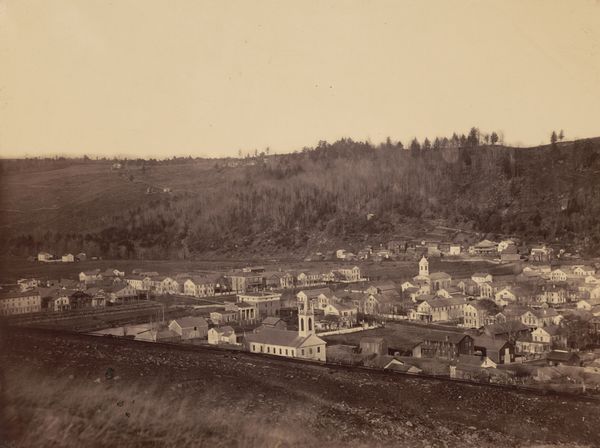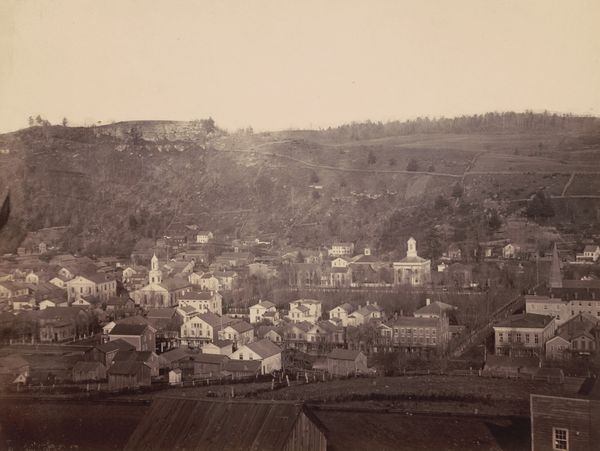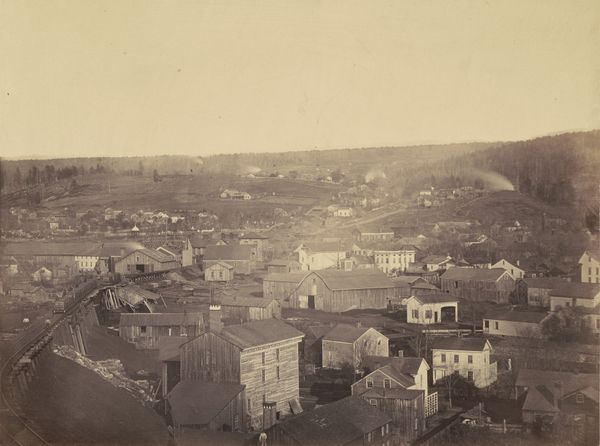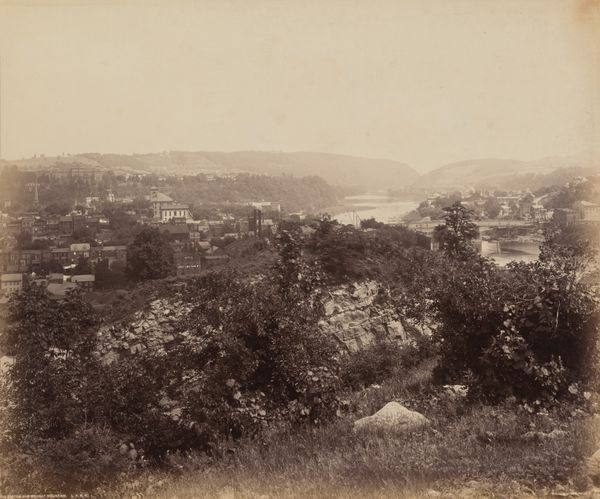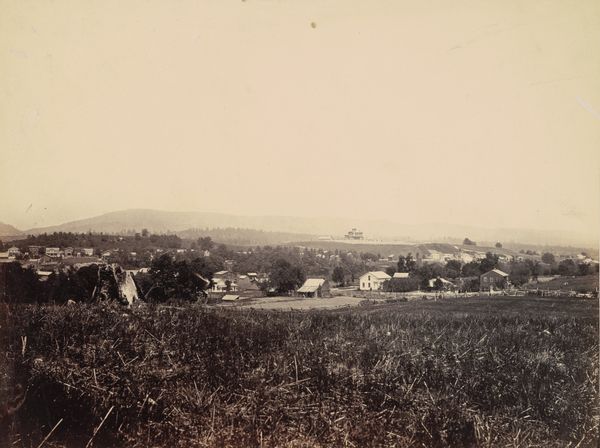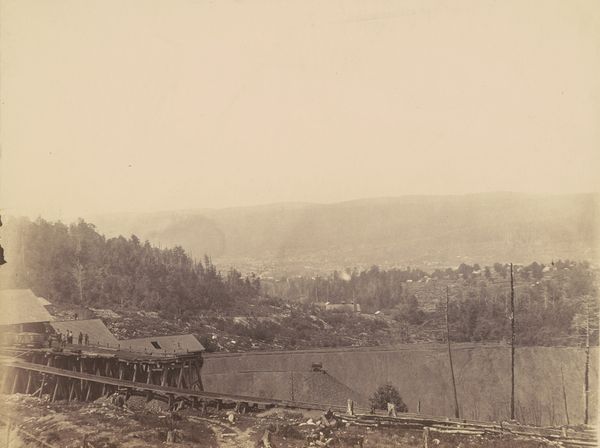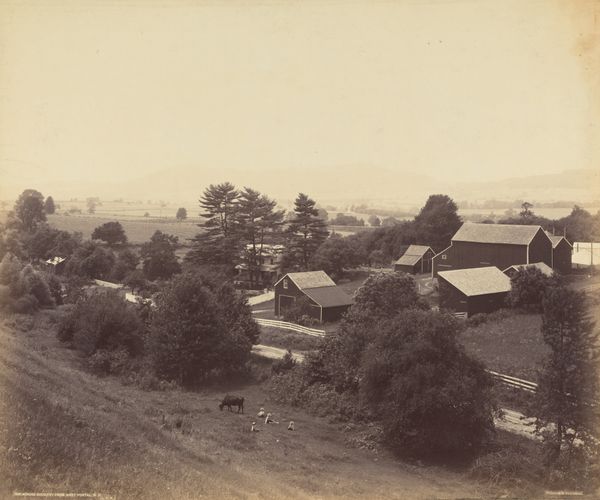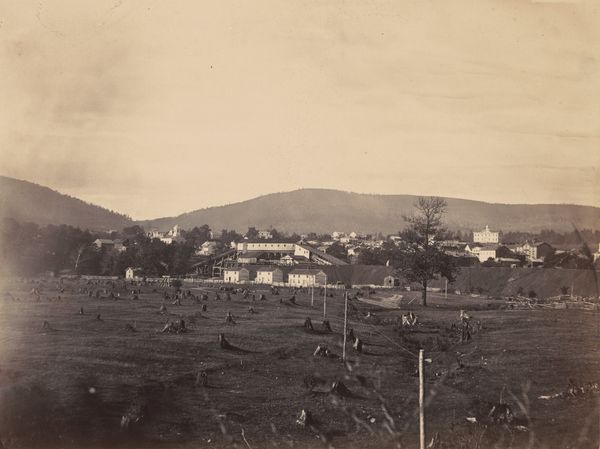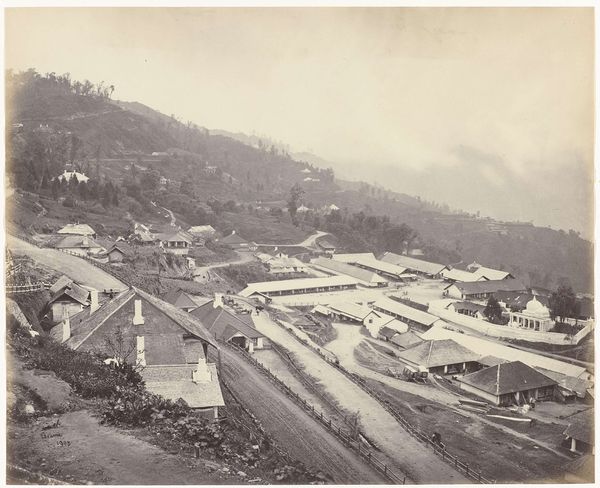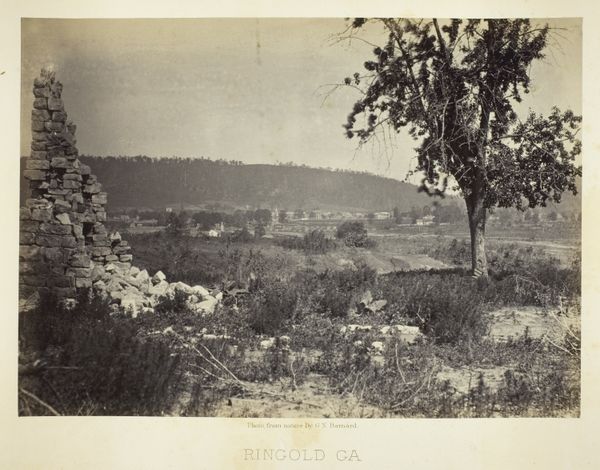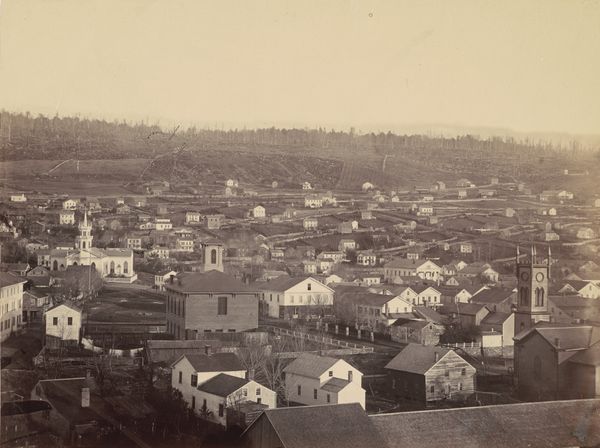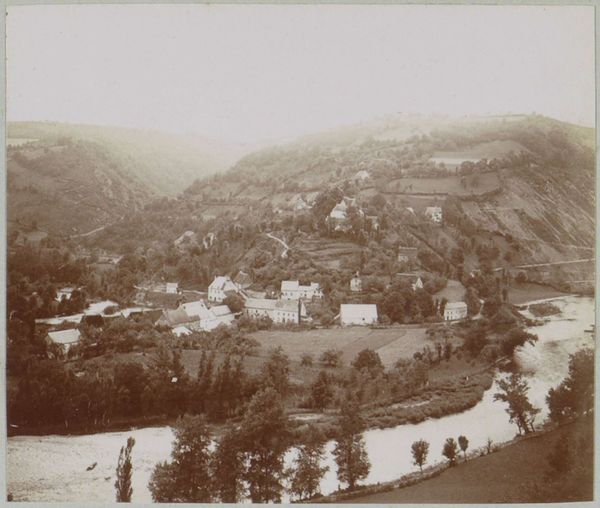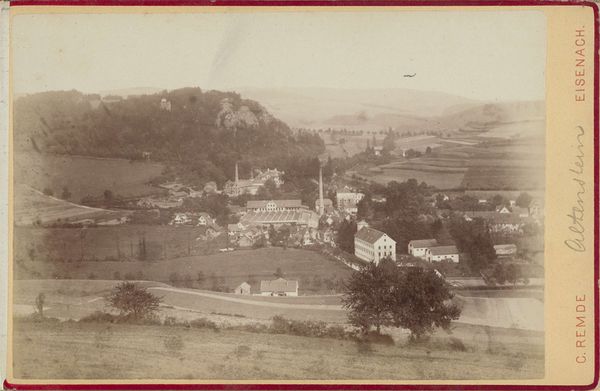
#
excavation photography
#
black and white photography
#
photo restoration
#
charcoal drawing
#
historical photography
#
old-timey
#
monochrome photography
#
19th century
#
outdoor activity
#
shadow overcast
Dimensions: image: 30.8 × 41 cm (12 1/8 × 16 1/8 in.) support: 44.5 x 53 cm (17 1/2 x 20 7/8 in.)
Copyright: National Gallery of Art: CC0 1.0
Curator: The photograph we’re looking at, entitled "Olyphant," was created around 1863 to 1865 by Thomas H. Johnson. Editor: It has such a wistful quality to it, almost dreamlike, rendered in muted tones of sepia. The scene seems to be cloaked in mist or early morning haze, adding a sense of stillness and quiet observation. Curator: Let's talk about that stillness. This photograph freezes a specific moment in the 19th century, when Olyphant, Pennsylvania, was experiencing significant changes due to the burgeoning anthracite coal industry. Johnson was capturing this shift through the technologies available to him, like the wet collodion process. Editor: Exactly, understanding those technologies and their limitations reveals so much! Photography wasn't merely a passive recorder but an active participant in constructing narratives about progress and community during rapid industrialization. Who had access to photography, and what narratives did those images create or erase about working-class communities? Curator: I am particularly drawn to the visual elements conveying the town. We can discern a variety of wooden buildings, a possible indication of resources. It highlights how the built environment shaped life during this period of industrial boom and coal extraction. Editor: And that environmental impact is enormous. We cannot overlook the extraction from that landscape. The haze could represent the beginning stages of that pollution impacting the air quality in the Olyphant community. Curator: Indeed, these landscapes speak of more than what is seen, highlighting resource extraction and urban life with all the attendant tensions and transitions. Editor: I think Johnson's photograph asks us to be critically aware of who gets remembered in photographs and the narratives they create and often obscure, leaving it up to us to analyze not just the image but what is missing, such as an environmental perspective on industrial progress. Curator: A truly evocative image with enduring material and historical importance. Editor: A poignant reminder of how the past continuously shapes our present.
Comments
No comments
Be the first to comment and join the conversation on the ultimate creative platform.
